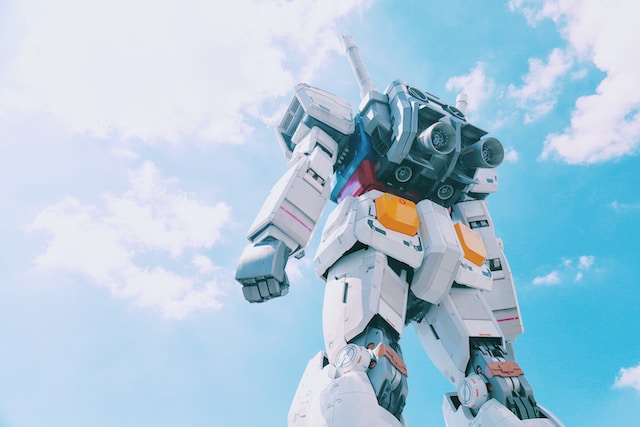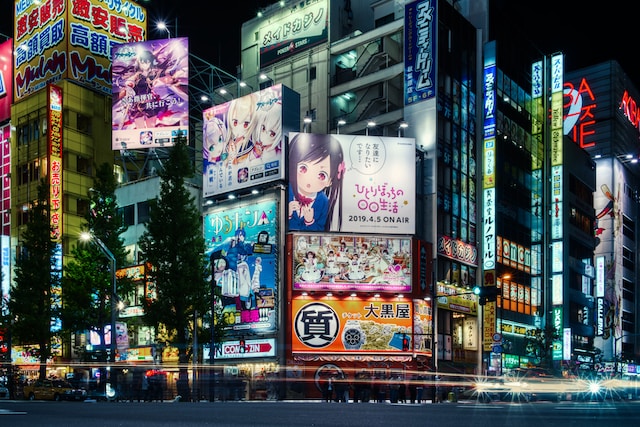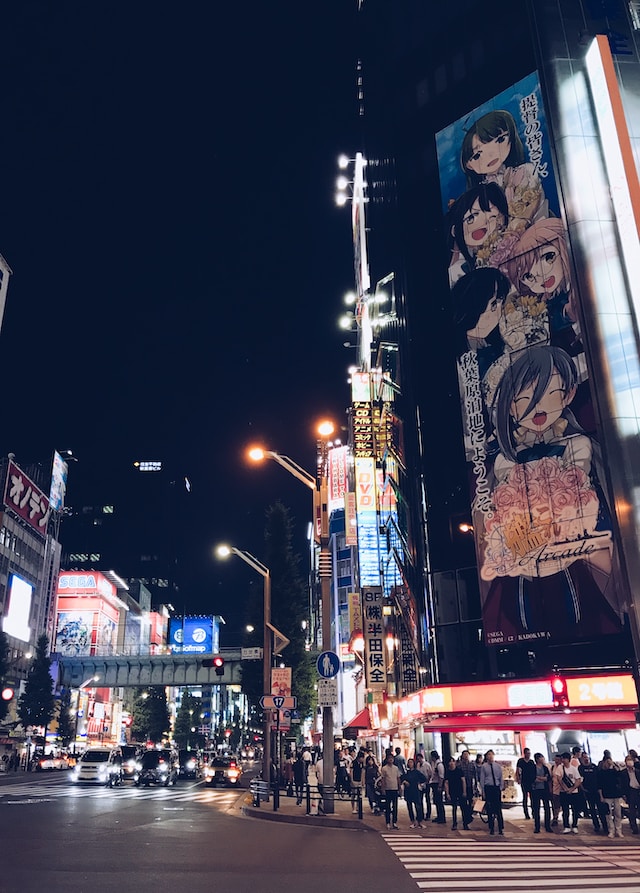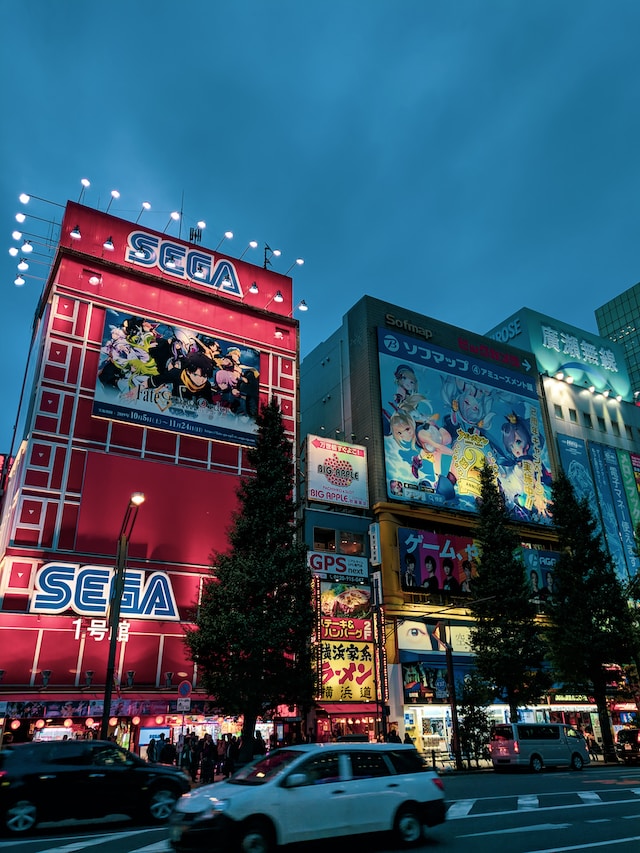
Anime, the Japanese style of animated storytelling, has taken the world by storm, captivating audiences with its unique combination of art, culture, and storytelling. Anime from Japan has grown into a cultural phenomenon, attracting fans from all over the world, and has now become a major export for Japan.
It’s now one of Japan’s biggest exports, with exports over $2 billion a year and being almost 5% of Japanese exports. Anime is a multi-billion dollar industry.
The popularity of anime from Japan has led to the creation of numerous anime studios, production companies, and merchandisers, with many companies now dedicating a significant portion of their business to anime-related products.
Appeal to various demographics
One of the reasons for the success of anime from Japan is its ability to appeal to a wide range of audiences. While initially popular among younger audiences, anime has expanded its reach to include adult audiences as well, with a growing number of anime series and films being created for mature viewers.
At its core, anime is an art form, blending traditional Japanese aesthetics with modern animation techniques. Some of the most popular anime series are instantly recognizable for their striking visual style, from the bold colors and exaggerated features of Dragon Ball Z to the evocative, almost cinematic landscapes of Studio Ghibli’s Spirited Away.
A versatile storytelling medium
But anime from Japan is not just about visuals – it is also a storytelling medium with its own unique styles and themes. Some anime series explore complex philosophical ideas, while others delve into poignant coming-of-age stories or epic tales of adventure and heroism.

One of the things that make anime so compelling is its ability to create rich and immersive worlds, populated by memorable characters with distinct personalities and motivations. Whether you’re watching the supernatural battles of Attack on Titan or the existential crises of Neon Genesis Evangelion, there’s always a fascinating story to explore and characters to root for (or against).
Different genres of anime:
One of the things that set anime from Japan apart from other forms of animation or live-action storytelling is the sheer variety of genres that it encompasses. From high-octane action and adventure to heartwarming romances and coming-of-age dramas, there’s an anime out there for every taste and interest. Here are just a few of the most popular genres of anime:
Action and Adventure: This genre often features intense battles, thrilling chases, and epic quests. Examples include Naruto, Attack on Titan, and Jojo’s Bizarre Adventure.
Romance and Drama: These anime focus on the emotional connections between characters, exploring themes like love, loss, and heartbreak. Some popular examples include Your Lie in April, Clannad, and Toradora!.
Fantasy and Supernatural: Magic, otherworldly creatures, and alternate dimensions are just a few of the elements you might find in this genre. Examples include Sword Art Online, Fullmetal Alchemist, and Inuyasha.
Sci-Fi and Mecha: These anime often feature advanced technology and mechanical devices like robots and spaceships. Examples include Gundam, Neon Genesis Evangelion, and Code Geass.
Comedy and Slice of Life: These anime focus on everyday experiences and situations, often with a humorous or lighthearted tone. Some popular examples include Azumanga Daioh, Lucky Star, and Ouran High School Host Club.
Of course, these are just a few of the many genres and sub-genres of anime out there. Whether you’re a die-hard action fan, a hopeless romantic, or something in between, there’s an anime out there that’s sure to capture your imagination.
Iconic Anime Series
If you’re new to the world of anime, you may be wondering where to start. With so many series to choose from, it can be overwhelming to decide which ones to watch. To help you out, here are a few of the most influential and popular anime series out there:
Naruto
This is a long-running series about a young ninja named Naruto who dreams of becoming the Hokage, the leader of his village. Naruto is known for its intense action and thrilling battles, but it also explores themes like friendship, loyalty, and perseverance.
One Piece
Another long-running series, One Piece follows the adventures of a group of pirates as they search for the mythical treasure known as the One Piece. Known for its extensive world-building and quirky characters, One Piece has become a beloved classic among anime fans.

Bleach
This series tells the story of a teenage boy named Ichigo who gains the power to see ghosts and becomes a Soul Reaper, tasked with protecting the living world from evil spirits. Bleach is known for its stylish visuals, intricate mythology, and dynamic fight scenes.
Attack on Titan
Based on the manga of the same name, Attack on Titan is a visceral and brutal series set in a world where humanity is on the brink of extinction from towering, man-eating giants called Titans. It’s known for its intense action and shocking plot twists.
Dragon Ball
One of the most iconic anime series of all time, Dragon Ball follows the adventures of Goku, a martial artist with incredible strength and fighting skills. Dragon Ball is known for its epic battles, memorable characters, and influence on the shonen genre as a whole.
Death Note
This is a psychological thriller about a high school student named Light Yagami who finds a mysterious notebook that can kill anyone whose name is written in it. As Light becomes consumed with his quest to create a utopia by eliminating criminals, he becomes locked in an intense game of cat-and-mouse with a mysterious detective known only as L.
These are just a few examples of the many iconic anime series out there. Each one has its own unique features and appeal, but they all share a common thread of engaging storytelling, memorable characters, and captivating visuals.
Anime Culture and Fandom
The global success of anime from Japan has led to the formation of a vibrant and enthusiastic anime fandom, with fans of all ages and nationalities coming together to celebrate their love of this unique art form.

- Anime conventions: Conventions are another important part of anime fandom, with events like Anime Expo and Comiket drawing tens of thousands of fans from around the world. These conventions offer fans a chance to meet other anime enthusiasts, attend panels and screenings, and purchase anime-related merchandise like toys, posters, and DVDs.
- Cosplay: One of the most visible manifestations of anime fandom is cosplay, where fans dress up as their favorite anime characters and attend conventions or events. Cosplay has become a creative outlet for many anime fans, with some even making their own costumes and props from scratch.
- Fanart and fanfiction: These are also popular ways for fans to express their love of anime. Fanart involves creating original artwork of favorite anime characters, while fanfiction involves writing original stories featuring those characters. Both fanart and fanfiction are often shared online, with fans posting their creations on social media or fan websites.
- Anime merchandise: Anime merchandise and collectibles have also become a big business, with fans eager to purchase everything from action figures to t-shirts to cosplay accessories. Many companies now specialize in producing anime-related merchandise, with some even creating limited edition items available only at conventions or through pre-orders.
- Online forums and communities: Online communities and forums have also played a significant role in anime fandom, with fans using social media and online platforms to connect with other fans, discuss their favorite shows, and share their artwork and fanfiction. Online platforms like MyAnimeList and Crunchyroll have also become popular ways to stream anime and track watching habits.
Bridging the cultural divide
Another aspect of anime that has helped to spread its popularity is its ability to bridge cultural divides, drawing on both Japanese and Western influences to create something entirely new. Fans around the world have discovered a love for anime, often seeking out the latest series and merchandise at conventions or online communities.
Anime has become a significant part of Japanese culture, and it continues to evolve and adapt to changing times. As the world becomes more globalized, anime’s reach and influence will only continue to grow, bringing a vibrant and unique perspective on art, culture, and storytelling to audiences around the globe.

